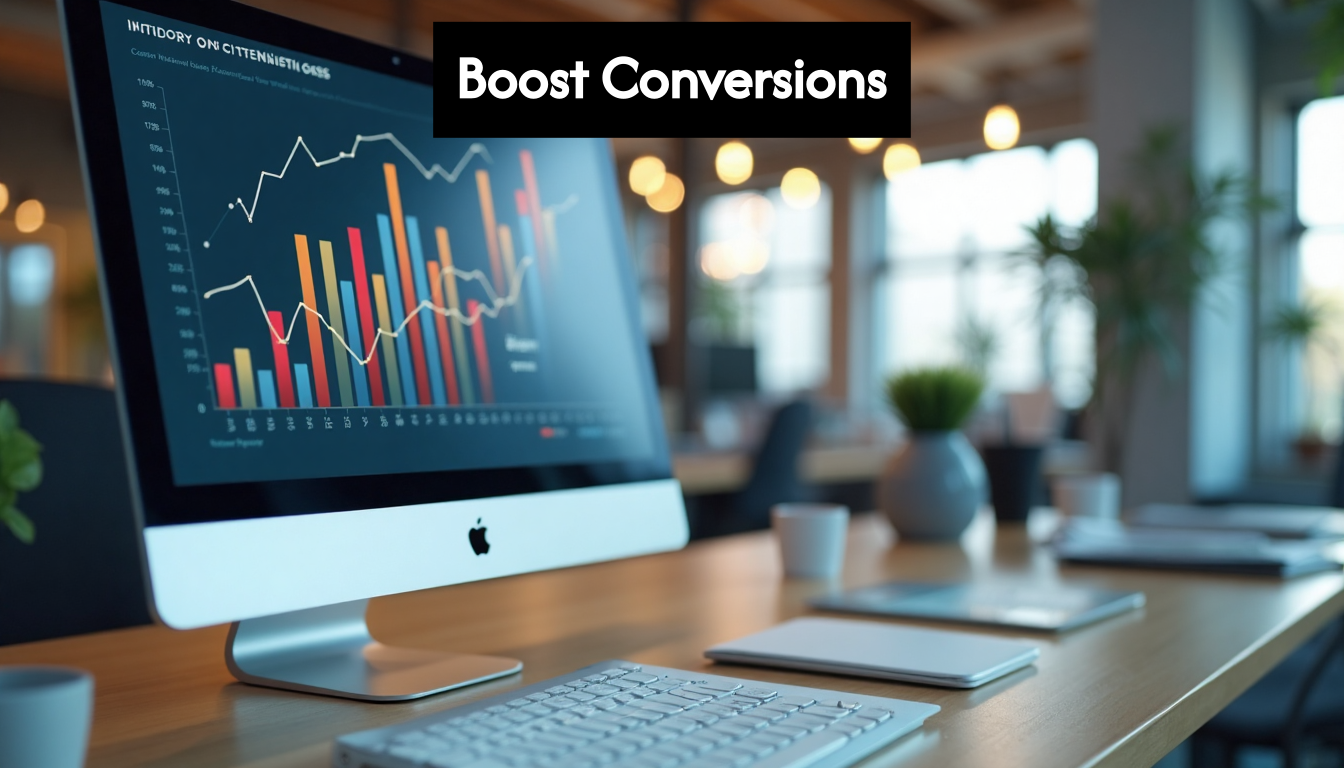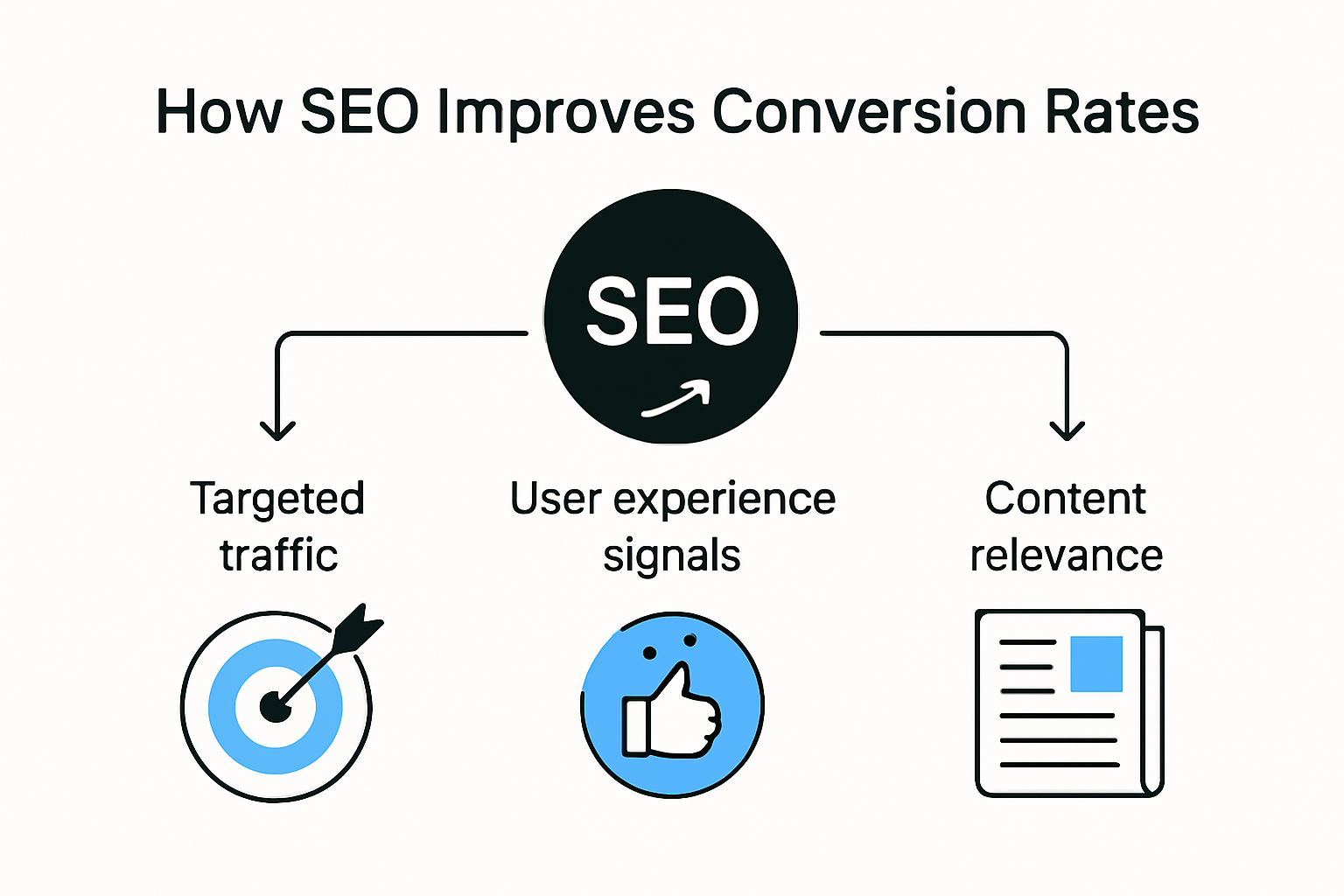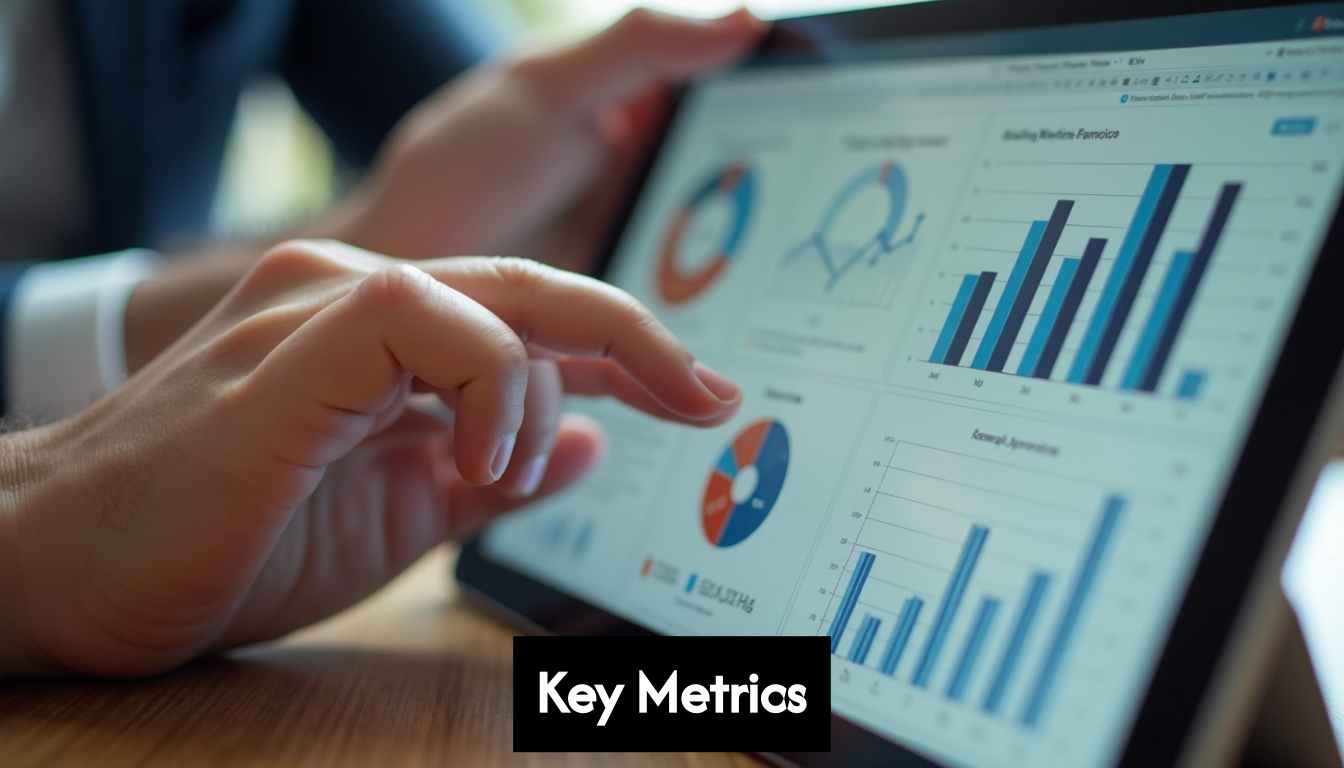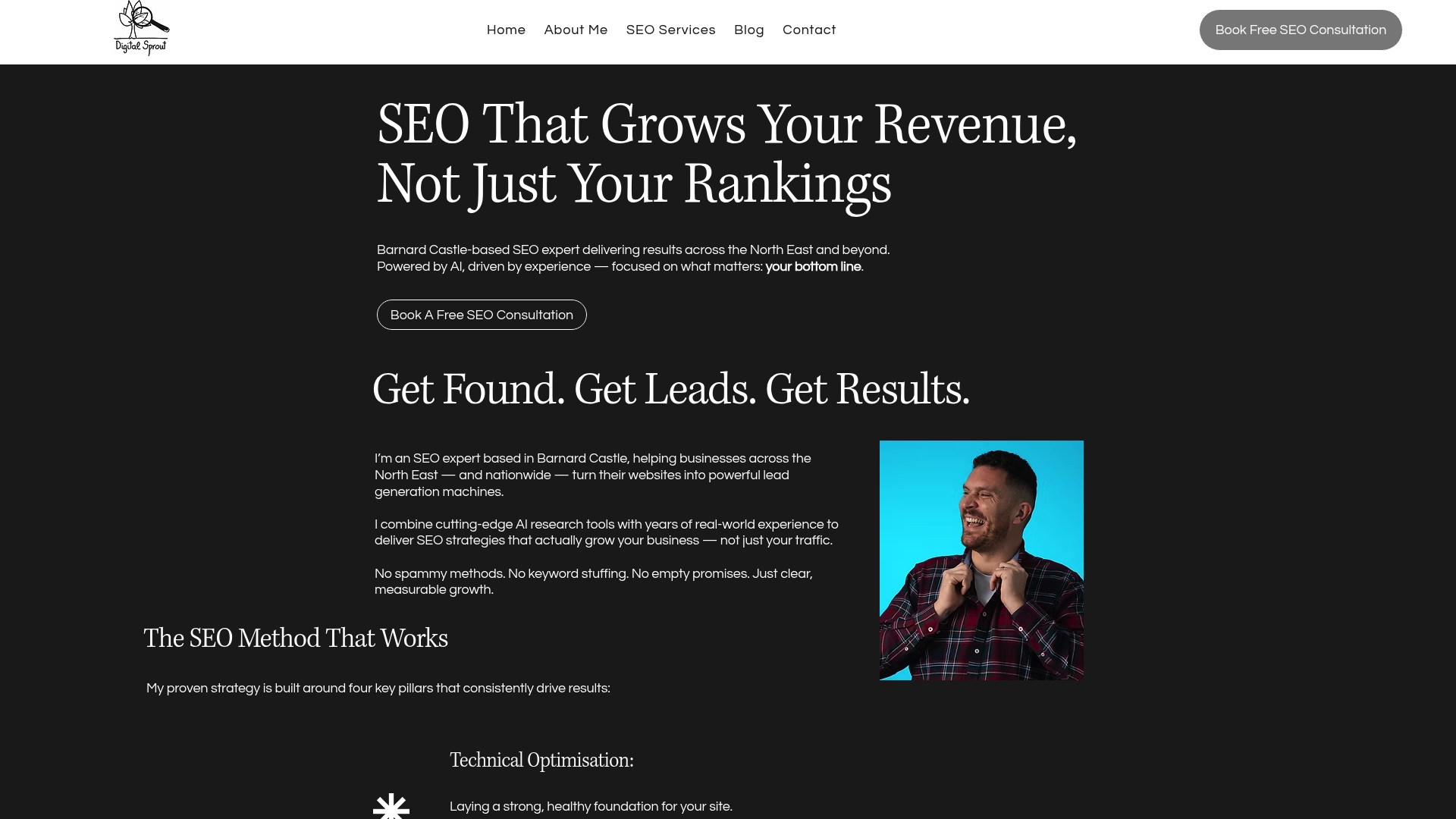Boost Conversions with SEO - 2025 Guide
- Mike Dodgson

- May 31
- 8 min read
Updated: Jun 22
Search engine optimisation can make or break a business’s success. It holds the key to turning passive visitors into active customers thanks to its potential to drive targeted traffic. But here’s the kicker. Many still underestimate how profoundly effective SEO can be in boosting conversion rates. With average conversion rates from SEO-driven traffic ranging between 2.1% for B2C and 2.6% for B2B businesses, the statistics paint a clear picture of its impact. This guide reveals how mastering the synergies between SEO and conversion strategies can redefine your online presence.
Table of Contents
Quick Summary
Why SEO Impacts Conversion Rates
Search engine optimisation directly influences conversion rates through strategic improvements that align website performance with user expectations and search engine requirements. The connection between SEO and conversion rates is not just theoretical but a measurable business impact that transforms how websites attract and engage potential customers.
Understanding the SEO Conversion Mechanism
Search engine optimisation works as a precision instrument for attracting high-intent users. When implemented correctly, SEO doesn’t simply drive traffic but attracts users most likely to take desired actions. Research from Digital Marketing First reveals that quality content accounts for nearly 23% of ranking factors, which directly correlates with increased user trust and higher conversion potential.

- Targeted Traffic
: SEO ensures your website appears for specific search queries relevant to your business
- User Experience Signals
: Optimised websites provide faster, more intuitive navigation
- Content Relevance
: Properly structured content matches user search intent precisely
Performance Metrics and Conversion Dynamics
Conversion rates demonstrate the tangible impact of strategic SEO implementation. According to VWO’s conversion rate analysis, average conversion rates from SEO-driven traffic range between 2.1% for B2C and 2.6% for B2B businesses. These figures underscore how targeted SEO strategies can significantly enhance user acquisition.
Moreover, technical SEO factors play a crucial role. Profile Tree’s UK market research demonstrates that website load time directly impacts conversion potential. Each second above a three-second load time can reduce conversions by approximately 12% in UK markets. This statistic highlights how technical optimisation is not just about search rankings but about creating seamless user experiences that encourage action.
Strategic Alignment of SEO and Conversion Goals
Successful websites recognise that SEO is not an isolated strategy but an integrated approach to digital marketing. By aligning keyword research, content strategy, and user experience design, businesses can create a holistic approach that naturally drives conversions.
The key is understanding user intent and creating pathways that guide potential customers from initial search to final conversion. This requires:
Comprehensive keyword research targeting high-intent search terms
Creating content that directly addresses user questions and needs
Designing clear, intuitive conversion pathways
Implementing technical optimisations that enhance site performance
Businesses that master this integration see remarkable results. They transform their websites from mere digital brochures into dynamic conversion engines that continuously attract, engage, and convert potential customers.
Key Metrics for Tracking Conversions
Tracking conversion metrics is a sophisticated process that goes beyond simple numerical measurements. It involves understanding complex user interactions, identifying performance indicators, and developing strategic insights that drive business growth. Modern digital marketing demands a nuanced approach to measuring how SEO efforts translate into tangible results.
Comprehensive Conversion Rate Analysis
Effective conversion tracking requires a multifaceted approach. SEO Premier’s 2025 research highlights the critical importance of Conversion Rate Per Source, which allows businesses to measure how different traffic channels perform. This metric provides granular insights into organic SEO traffic performance compared to paid, social, and referral channels.
Key components of comprehensive conversion rate analysis include:
- Source-specific Performance
: Tracking conversion rates across different traffic channels
- User Journey Mapping
: Understanding how users interact with your website
- Conversion Path Identification
: Recognising the most effective routes to conversion
Advanced Engagement Metrics
Beyond traditional conversion tracking, modern SEO strategies incorporate advanced engagement metrics. [Profile Tree’s UK market analysis](https://profiletree.com/seo-health-check-in-2025-why-it-m aters-across-ireland-and-the-uk/) emphasizes the importance of comprehensive SEO health checks that link technical site performance with conversion metrics.
Critical engagement metrics include:
- Scroll Depth Tracking
: Measuring how far users scroll through content
- Time on Page
: Analyzing user engagement and content relevance
- Interaction Rates
: Evaluating user actions such as clicks, form submissions, and downloads
SEO Premier’s research demonstrates that scroll depth tracking has become particularly essential. This metric reveals crucial insights into how users engage with page content, identifying exactly where user interest wanes and where potential conversion barriers exist.
Strategic Conversion Optimization
Successful conversion tracking is not just about collecting data but transforming insights into actionable strategies. Businesses must develop a holistic approach that combines technical analysis, user experience design, and strategic content optimization.
The most effective conversion tracking strategies involve:
Continuous performance monitoring
Regular content and design iterations
Proactive identification of conversion barriers
Personalized user experience improvements

By implementing a robust conversion tracking framework, businesses can move beyond passive data collection. They create a dynamic system that continuously learns, adapts, and improves, turning website visitors into committed customers. The goal is not just to measure conversions but to understand and systematically enhance the entire user conversion journey.
Improve Your SEO Conversion Rate
Improving SEO conversion rates requires a strategic, multifaceted approach that goes beyond traditional optimization techniques. Businesses must develop a comprehensive strategy that seamlessly integrates technical performance, user experience, and targeted content design.
Technical Foundation for Conversion Optimization
Profile Tree’s UK market research emphasizes the critical importance of comprehensive SEO health checks in 2025. A robust technical foundation directly influences conversion potential by creating an environment that encourages user engagement and trust.
Key technical elements include:
- Website Security
: Implementing SSL certificates and robust security protocols
- Mobile Responsiveness
: Ensuring seamless performance across all device types
- Page Load Speed
: Optimizing technical elements to reduce loading times
- Clean, Intuitive Navigation
: Creating clear pathways for user interaction
First Page Sage’s conversion research confirms that sites with clear, user-friendly technical infrastructure see significantly higher conversion rates. The goal is to remove any potential barriers that might prevent users from taking desired actions.
Content Strategy for Conversion
Search Engine Land’s latest research highlights the importance of strategic content targeting. Successful conversion optimization moves beyond generic content by focusing on mid-funnel (MOFU) and bottom-funnel (BOFU) keywords that attract high-intent users.
Effective content conversion strategies involve:
Creating deep, structured content guides
Implementing precise schema markup
Developing targeted landing pages
Writing compelling calls-to-action

The most successful approaches craft content that directly addresses user intent, providing clear value and smooth conversion pathways. This means understanding exactly what potential customers seek and delivering it with precision and clarity.
User Experience and Conversion Design
Ultimately, SEO conversion optimization is about creating a seamless user journey. Every element of your website should guide users towards their desired outcome while simultaneously meeting search engine requirements.
Critical user experience considerations include:
Intuitive page layouts
Clear, compelling value propositions
Minimal form complexity
Strategic placement of conversion elements
Consistent messaging across pages
Businesses that master this approach transform their websites from passive information repositories into dynamic conversion engines. The key is viewing SEO and conversion as integrated strategies rather than separate activities.
By combining technical excellence, strategic content, and user-centric design, organizations can create powerful digital experiences that not only attract visitors but effectively convert them into committed customers. The most successful approach recognizes that every interaction is an opportunity to demonstrate value and build trust.
Average Conversion Rates Explained
Converting website visitors into customers requires understanding nuanced performance metrics across different industries and business models. Average conversion rates provide critical benchmarks that help businesses evaluate their digital marketing effectiveness and identify strategic improvement opportunities.
Industry-Specific Conversion Rate Variations
First Page Sage’s comprehensive research reveals significant variation in conversion rates across different sectors. The overall average SEO conversion rate sits at 2.4%, with notable differences between industry segments.
Industry conversion rate breakdown includes:

- Services Businesses
: 2.7% average conversion rate
- eCommerce Sites
: 1.6% average conversion rate
- B2B eCommerce
: 1.85% conversion rate
- B2C eCommerce
: 1.3% conversion rate
VWO’s sector analysis provides additional insights, highlighting specific industry performance. Healthcare websites demonstrate a 3% conversion rate, while legal sector websites achieve an impressive 3.4% average.
Factors Influencing Conversion Rate Performance
Multiple dynamic factors contribute to conversion rate variations. Understanding these elements helps businesses develop targeted strategies for improvement. Critical influencing factors include:
Website design and user experience
Product or service complexity
Price point and perceived value
Traffic quality and user intent
Competitive landscape
Marketing messaging effectiveness
HubSpot’s marketing statistics emphasize that conversion rates are not static metrics but fluid indicators of overall digital marketing health. In 2025, e-commerce sites consistently struggle with conversion rates below 2%, underscoring the need for continuous optimization.
Comparative Performance Benchmarking
Successful businesses approach conversion rates as strategic performance indicators rather than isolated numbers. Comparative benchmarking allows organizations to:
Identify performance gaps
Understand competitive positioning
Develop targeted improvement strategies
Set realistic growth expectations
While average conversion rates provide valuable context, exceptional businesses recognize that individual performance matters more than industry averages. The goal is not simply to meet benchmarks but to systematically exceed them through continuous refinement of digital strategies.
Businesses must view conversion rates as dynamic metrics reflecting the complex interaction between user experience, content quality, technical performance, and marketing effectiveness. By adopting a holistic approach that considers multiple performance dimensions, organizations can transform average conversion rates into sustainable competitive advantages.
Frequently Asked Questions
How does SEO impact conversion rates?
Search engine optimisation enhances conversion rates by attracting high-intent users, improving user experience, and ensuring content relevance. Properly executed SEO strategies drive targeted traffic that is more likely to convert.
What are the average conversion rates for SEO traffic in 2025?
The average conversion rates from SEO-driven traffic in 2025 are approximately 2.1% for B2C businesses and 2.6% for B2B businesses. These figures indicate the effectiveness of strategic SEO in converting visitors into customers.
What metrics should I track to measure SEO conversion effectiveness?
Key metrics include Conversion Rate Per Source, user engagement metrics like time on page and scroll depth, and conversion path identification. These metrics help understand user interactions and the effectiveness of different traffic channels.
How can I improve my website’s SEO conversion rate?
To improve SEO conversion rates, focus on technical optimisation (like page speed and mobile responsiveness), create content that addresses user intent, and enhance user experience with clear navigation and compelling calls-to-action.
Unlock Your Potential with Proven SEO Strategies
Are you tired of traffic that doesn’t convert? At Digital Sprout, we understand the frustration of having visitors who don’t take action. Your SEO efforts should not just boost rankings; they should also drive meaningful conversions. As highlighted in our recent article, aligning your SEO strategy with your conversion goals is essential for maximising ROI. That’s where we come in.
With our tailored services — from technical optimisation to industry-relevant backlinks — we craft an SEO approach that turns your organic traffic into leads and sales. Don’t let your investment go to waste; it’s time to shift from vanity metrics to results-driven strategies.
Ready to see how you can improve your conversion rates with bespoke SEO solutions? Visit Digital Sprout today and let’s map out your success together!
.jpg)


